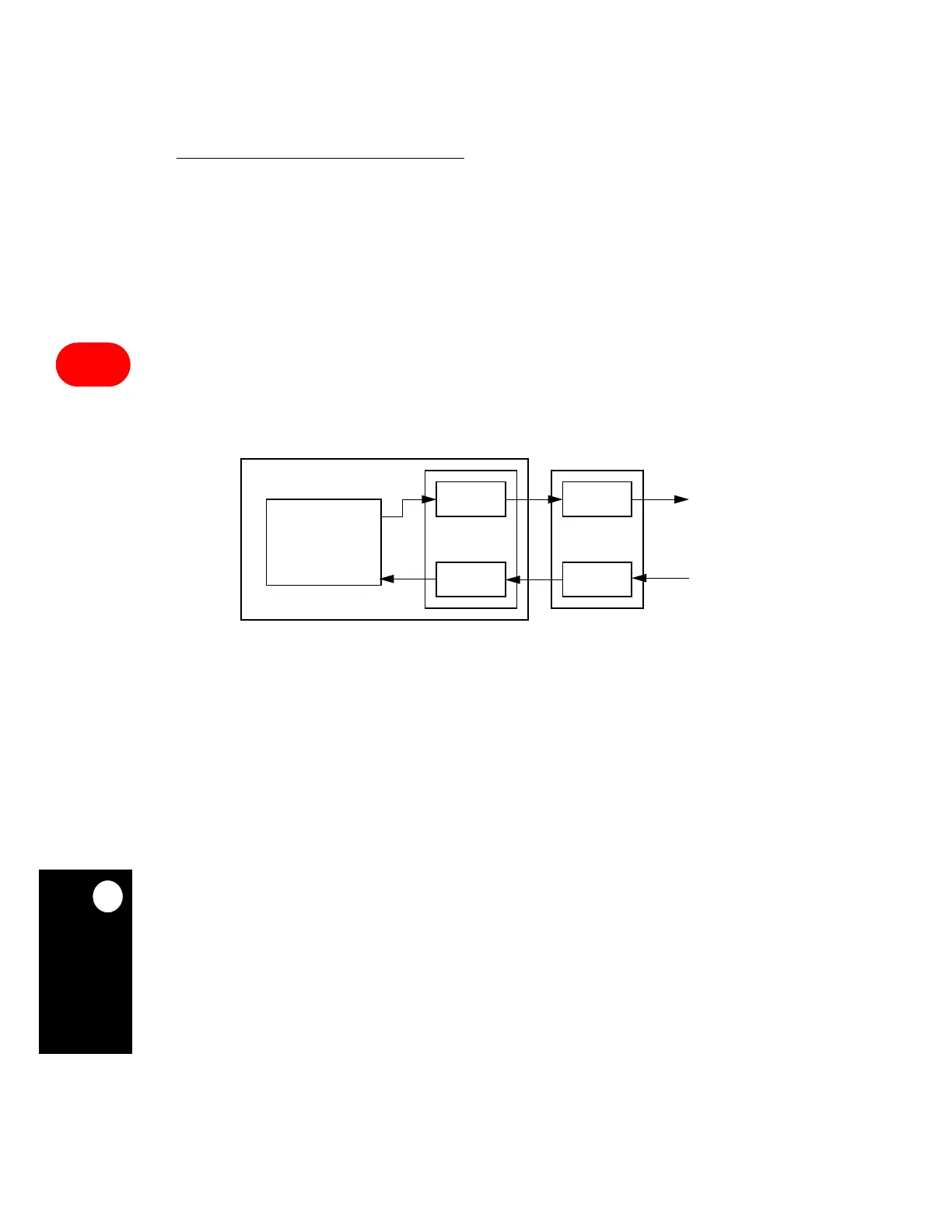Communication Processor Module
16-198 MPC823e REFERENCE MANUAL MOTOROLA
SCCs
COMMUNICATION
16
PROCESSOR MODULE
16.9.13 DPLL and Serial Infrared Encoder/Decoder
IrDA is a family of specifications intended to facilitate the interconnection of computers and
peripherals using a directed half-duplex serial infrared physical communications medium.
The infrared data association (IrDA) physical layer standard version 1.1 specifies three
modes of operation, each one with a distinct modulation scheme and signaling rate.
• Low speed mode—2.4Kb/s to 115.2Kb/s
• Middle speed mode—0.576 Mb/s or 1.152 Mb/s
• High speed mode—4 Mb/s
Figure 16-73 illustrates how to implement a general infrared link with the MPC823e using an
SCC, IrDA encoder/decoder module, and external IrDA transducer module.
The IrDA DPLL is driven by one of the baud rate generator outputs or by an external clock
called a high-speed receive/transmit clock (HSRCLK/HSTCLK) that is used as a reference
clock for the IrDA DPLL. In low- and middle-speed modes, the HSRCLK and HSTCLK
frequency must be 16x the serial frequency. In high-speed mode, the ratio between the
HSRCLK/HSTCLK frequency and the serial frequency depends on the IrDA DPLL mode,
which is currently 12x the serial frequency. Therefore, for high-speed mode IrDA operation
from an external clock, a 48MHz frequency must be provided. It you are using a source for
HSRCLK and HSTCLK, the minimum system frequency must be 48MHz. See
Section 16.9.20.5 Programming Model for more information.
MPC823e
Figure 16-73. Serial IrDA Link
IR TRANSMIT
ENCODER
IR RECEIVE
DECODER
ENCODER/
DECODER
MODULE
IR
TRANSDUCER
MODULE
OUTPUT
DRIVER&LED
DETECTOR
& RECEIVER
IR OUT
IR IN
SCCx
TXDx
RXDx

